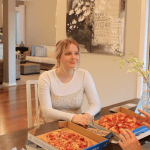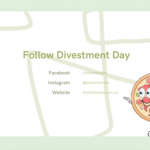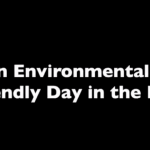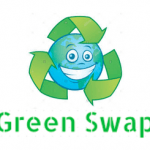For our final project, we focussed on our concept of Divestment Day after receiving extremely positive feedback throughout the semester. Our final piece is something completely different from our initial iterations, as collectively we were struggling to adapt to the new restrictions we faced due to Covid-19. With that in mind, I still believe we’ve created something unique, useful and necessary given the global climate.
From the outset, our team wanted to create something that was in equal parts informative and entertaining to try to reduce the misconception that divesting is a difficult task to undertake. To that degree, our project was extremely successful in its aims. By creating a campaign with multiple forms of media, we’ve been able to show people what divestment is, why it is important, and how to do it without inundating them with too much information at any one time. Instead, we broke up the information across all our media platforms and paired them with some facts and figures for legitimacy. We also created light-hearted branding through soft colours and a fun logo so people would be less intimidated by the message we were sending. We wanted to stick to a fun and social theme throughout all of our content.
Through the aid of some feedback and through Shome and Marx’s Psychology of Climate Change Communication (2009), we also focussed on the importance of letting people know what the campaigns bigger picture goal was – that divesting puts pressure on big companies to reassess their values and consider supporting renewable energy. Each piece of media included a call to action for our viewers to encourage them to divest and why they should do so, which is extremely valuable when directing people towards a certain goal. We also created something with the aim to be social and fun. This was done to, again, make divesting seem less intimidating and to encourage people to hold their friends to a social contract – encouraging the mentality of ‘if they’re doing it, why shouldn’t I?’
After many conversations, we decided to scrap the idea of having a mascot for this project – Divestment Dave. This is a decision that came out of necessity due to the limitations each of us faced. While we are happy with this decision, I believe the addition of Dave would have strengthened our campaign even further. It definitely would have aided in creating branding and recognition amongst the public, which generally leads to the assumption of legitimacy. It also would have strengthened our aim in turning something seemingly ‘boring’ into something fun and entertaining. Our answer to this was to have a voiceover in our visual work that had character and charisma. While they aren’t explicitly called Divestment Dave, there is certainly room for us to extend and build upon this idea if we were to continue it long term. Further, if this project were to be revised, a stricter timeline of events would be extremely beneficial. While we did create a timeline at the start of our project, it was perhaps not particularly ‘realistic’ in terms of a legitimate marketing campaign. Some more research into this would have helped, however given the amount of time we had to utilise, we certainly did the best we could.
We received some feedback in the final few classes that encouraged us to create more of an emotional tie to the cause by explicitly showing the effects of fossil fuels. However, as a group we made a conscious decision to steer away from this method of communication. Realistically, our campaign is not aimed to create awareness about climate change’s effects. It is, however, targeting people that are already aware of the urgency and are doing the usual (recycling, avoiding plastic, composting), thus we wanted to have a new take by created something fun and social which, in our eyes, is our biggest asset. By keeping it fun, the information that is imbedded within the content is easy to digest, rather than the typical wordy, figure-heavy media that is produced. We also kept in mind the importance of framing across all of our content. Particularly in regard to the social media, we created a ‘local’ frame by tying our message to issues people are aware of and will probably already care about. For example, we linked the invested of fossil fuels to the destruction of the Great Barrier Reef. This connection will legitimise our message, and also evoke an emotion of care through relatability.
Although no project can ever be perfect, we certainly created something meaningful that could, if given the opportunity, be extremely successful in a ‘real world’ setting. On a broader note, I’m also extremely grateful for the knowledge I’ve gained through completing this project. I’m definitely going to take more care when considering future finances!




 When planning for this week’s sketch, we knew we wanted to incorporate somewhat of a step-by-step guide to making more sustainable choices in your everyday life. Though we’d initially planned to create a podcast style audio piece that simply included ’10 steps’, we ended up switching out our idea to what became the final product – ‘a day in the life’.
When planning for this week’s sketch, we knew we wanted to incorporate somewhat of a step-by-step guide to making more sustainable choices in your everyday life. Though we’d initially planned to create a podcast style audio piece that simply included ’10 steps’, we ended up switching out our idea to what became the final product – ‘a day in the life’.

